Can Fine Artists Craft? Can Crafters Make Art?
In this week’s post, I share my newest painting and other creative projects, and talk about linking art and crafts together.
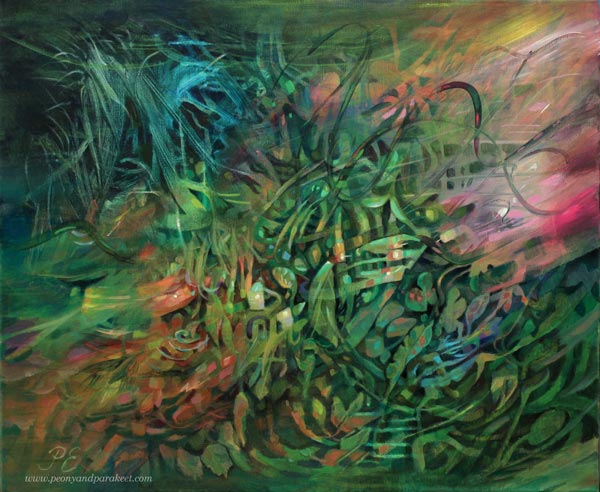
Here’s my new painting called “Elämän nälkä – Hunger for Life.” It’s made in acrylics. and the size is 54 x 65 cm (about 21 x 25,5 inches). I started it before my dog Cosmo passed way, but it feels very timely, expressing how we want to live and survive, even if life is not in our control.
How I Created This Painting
My paintings often start with a specific color in mind, and this one was all blue in the beginning, and the orientation was vertical.
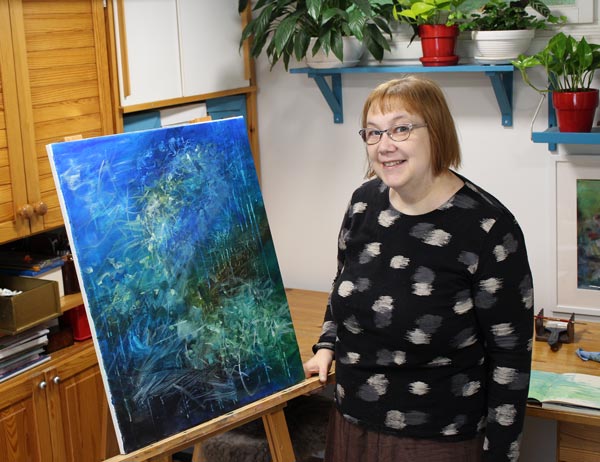
Then I turned it around and added more colors, then turned around again!
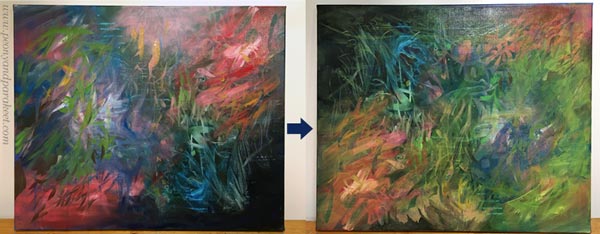
I wanted everything in this piece to be wild and free. It’s enjoyable to paint this way.
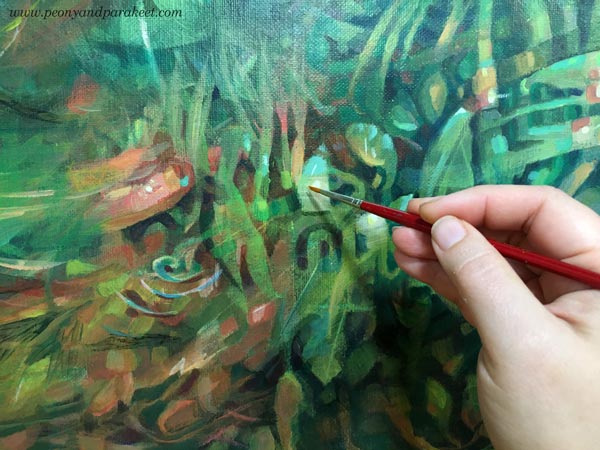
My favorite part of the painting is the top corner. It’s so sinister, and yet, so beautiful!
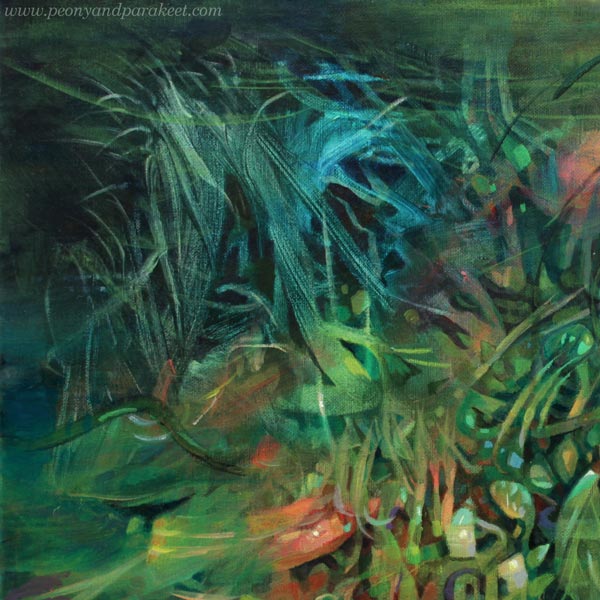
Here’s the whole painting again. I really like this one even if the atmosphere is gloomier than usual.

I always take the final photos before varnishing, because it’s easier to take pictures when the painting isn’t glistening. However, I love how the varnish makes the colors glow.
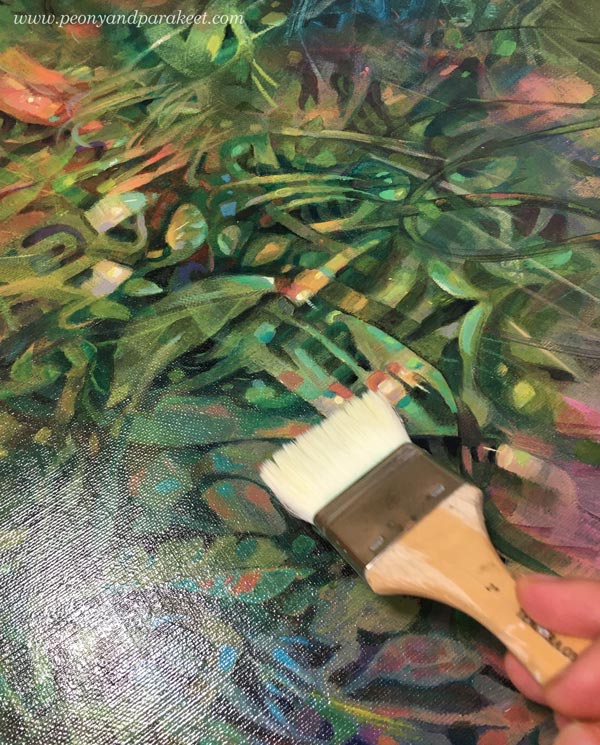
Painting Feels Different from Crafting
For me, creating art is a strange mixture of letting go and paying attention to the tiniest details. It’s like I am the mother and caretaker for my paintings, but can’t fully control the children’s personality and actions.
In my spare time, when quilting or knitting, it’s different. I can feel a sense of control, and I like it a lot. After saying goodbye to Cosmo, I sewed a quilt for Stella. I had the blocks ready, so the project was already half-way. About 20 years ago, I participated a quilt block lottery, where a group of quilters sewed similar kinds of blocks and happened to win them all. I had also sewn some more recently.
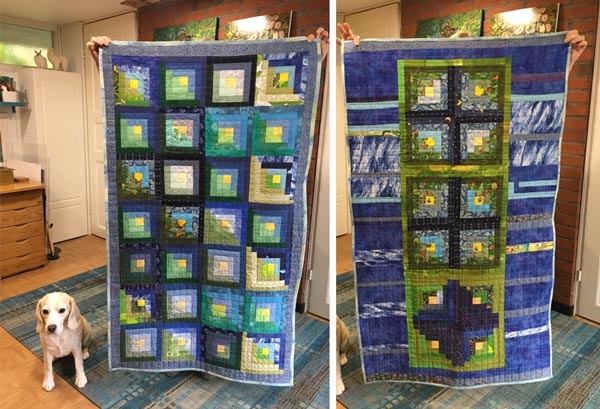
Art Inspiration from Crafting
My relationship for quilting and knitting has changed over the years. About 20 years ago, I thought that crafting is my way of creating art. But the more I got interested in painting and drawing, the less creative it felt. During the past 6 years, art-making and crafting have been strictly separated: visual art is the profession and crafting is the hobby.
This fall, my mindset has changed. I now realize that knitting is a way to give space for the internal processing that my paintings need. When I knit, my subconscious is sketching.
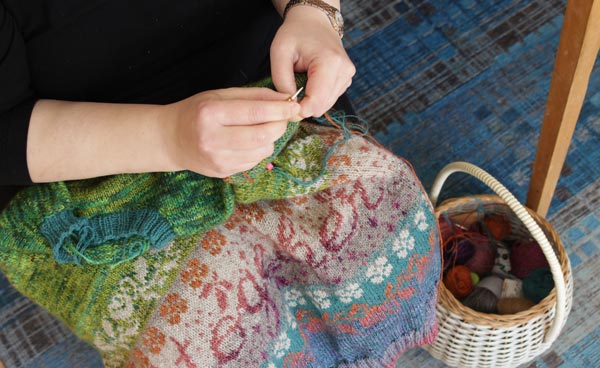
I love stranded knitting with many colors. My current project is Joji Locatelli’s All Together Sweater.
Here’s my current painting in progress. At least in this stage, it has some similarities with the sweater!
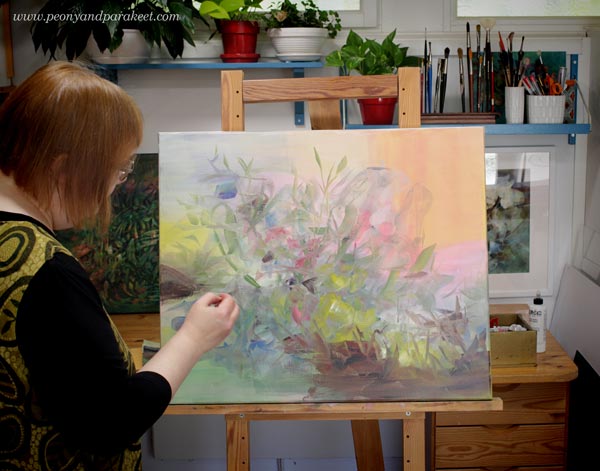
In general, I am more open to inspiration that I get from crafting, and vice versa. I made this quilt for my friend’s puppy.
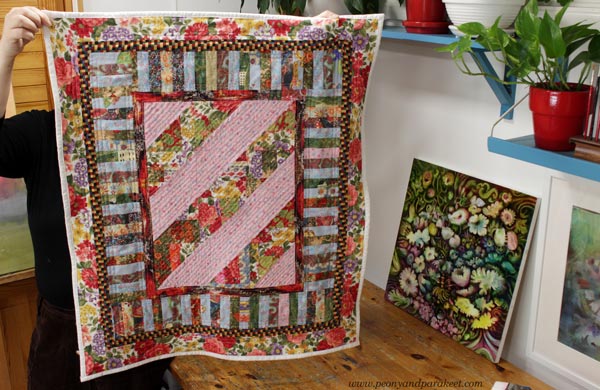
Crafter, Craft Artist, Fine Artist – What’s Your Number One Creative Activity?
Many who create both art and crafts struggle with finding their style. For me, the working solution was to draw a clear line between the two. It made me see what things were missing in my artistic process, and what I needed to practice more. My artistic identity needed this isolation to make a clear hierarchy in what I create.
But now, I feel I can loosen up. Here’s what I wrote on Peony and Parakeet’s Facebook page last week:
“Art makes us more aware of what affects us and how we process it. Sometimes it means that we don’t want to immerse ourselves into something because it would not have a good impact on us. Other times it means that we want more of something because we know we need that. But for me, the most significant thing has been that accidental things happen, and I don’t need to filter everything. Both art and life run through us, and when the stream gets stronger, it will change not only us but our surroundings as well. When we say we want to loosen up, isn’t that what we really mean?”
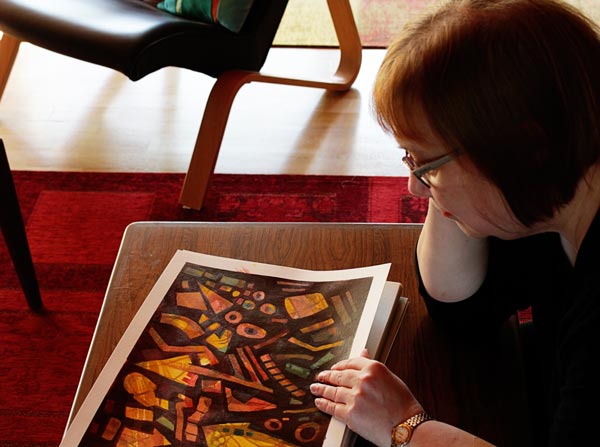
This month, I have done a lot more than just creating canvas paintings. I am working on a new class about abstract art and Paul Klee’s teachings. I have talked about Paul Klee before, but now I am creating a class that translates his teachings to a more expressive style. Hopefully, the class is launching at the end of November, stay tuned!
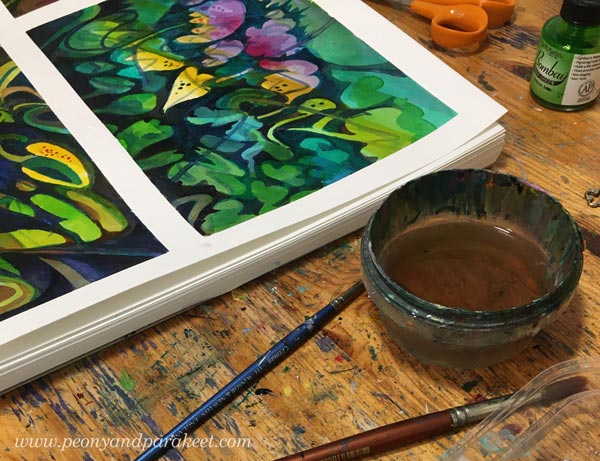
I have also finished an art journaling mini-course for an artist collaboration project. It will be for sale in October – so very soon!
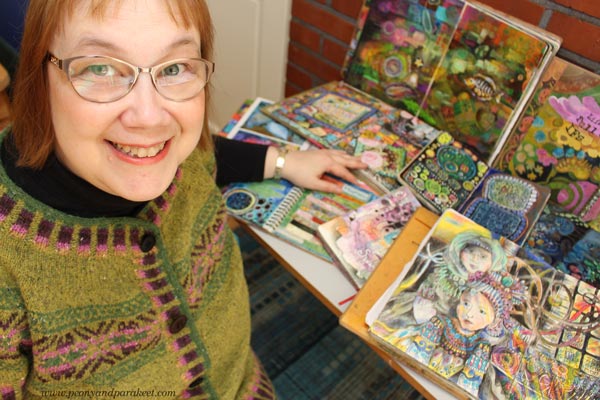
What’s Your Number One Creative Activity?
Here’s how I see myself now: I am a visual artist who creates abstract nature paintings mostly. I process my paintings by knitting, writing, art journaling, and doing daily walks. I live in a midcentury home, and my background is in design. I process my designs by growing plants and quilting. My paintings have design elements, and my designs have elements that are painted.
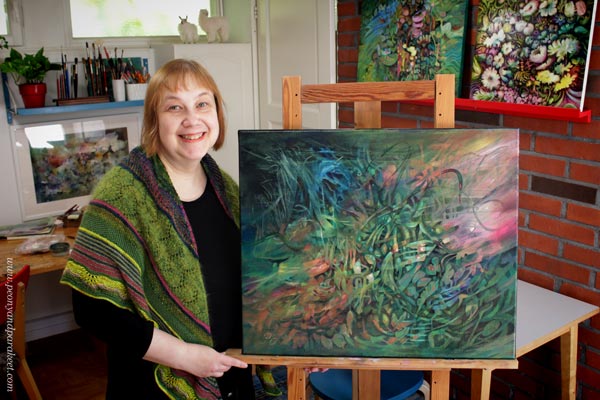
Painting is my number one thing. All the other activities serve it.
How would you define yourself through your creative activities? What’s your number one creative activity?
The Child and The Adult – Finding Clarity for Your Art
This week I show a new painting “Call of the Sun” and talk about finding clarity in art. This week’s post is especially for you who feels that your art is all over the place and you have no artistic direction.
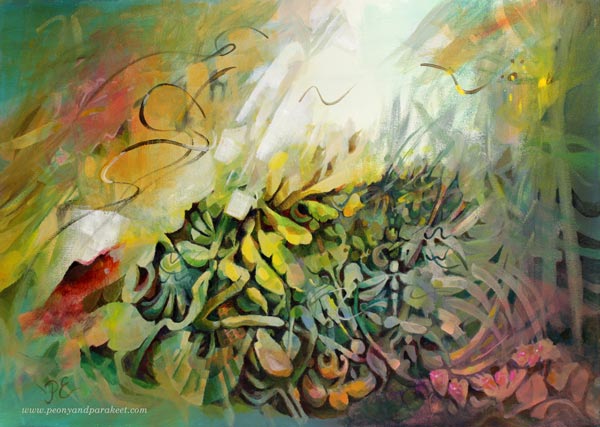
Auringon kutsu – Call of the Sun, acrylics, 50 x 70 cm. Click the image to see it bigger!
The Child and The Adult – Who Do You Serve?
I used to think there are two kinds of artists – those who like to play and dream, and those who are more ambitious and aim to express their deepest emotions. Just recently, when I started this new painting, I asked myself: “What do you want to paint, Paivi?” And the answer was: “Horses!”
– You can’t paint horses only!
– Why?
– Because there’s more that needs to come out.
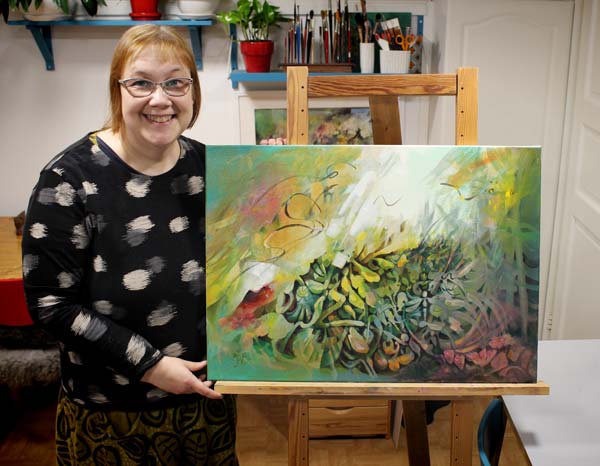
There was. There is. My inner child wants me to paint horses, but I am an adult too. If all my art is playful illustrations, I am desperately missing the adult in me.
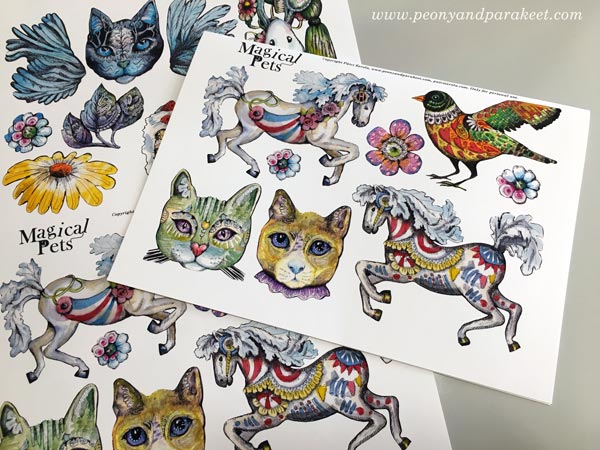
The Magical Pets image sheet is now available in my art shop. Or make your own in the classes Animal Inkdom and Magical Inkdom!
Concrete vs. Abstract
The adult in me wants to work in a way that does not appeal to the child. The expression is more intuitive and abstract and thoughts less concrete. I feel free when painting like this. It’s like life travels through me, and it heals my soul. It makes me feel that this is the best that art can offer.
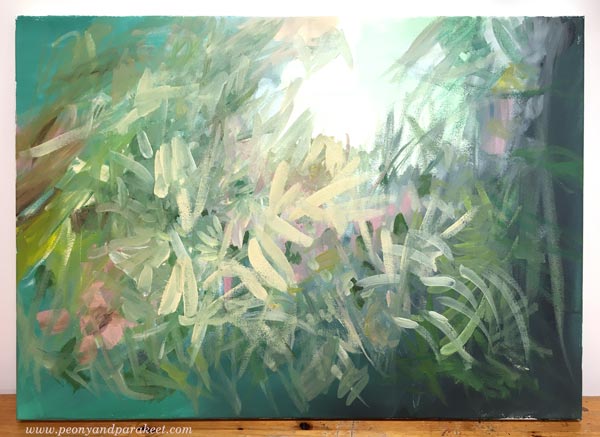
But I also feel free when I grab a more childish painting. I imagine talking to the horse and how it responses with gentleness.
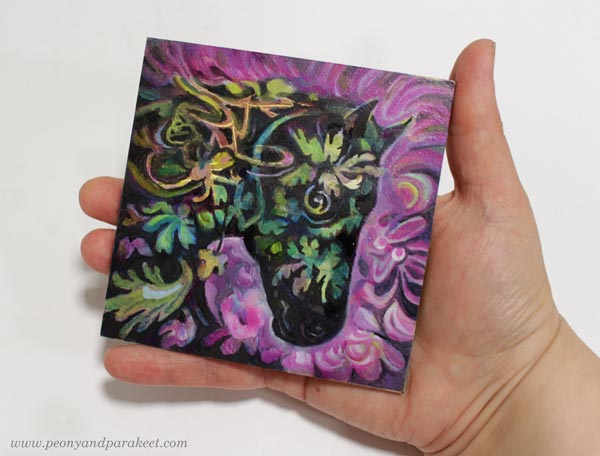
This, too, is the best that art can offer – the connection to childhood, to the person who didn’t want much more than a pet of her own.
The Child and the Adult – Don’t Lose Either One
Nowadays, my studio is both the playroom and the space for meditation. The inner adult needs to paint with the inner child and vice versa.
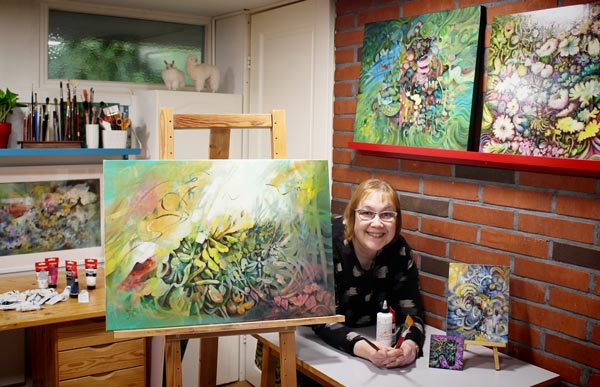
If the child gets neglected, other people’s expectations step in, and I lose myself. If the adult is away, I focus too much on the tangible things. Then the invisible side of the experience doesn’t come through. This realization has helped me in finding clarity for my art.
What are Invisible and Intangible Things?
Examples of intangible things that we can visualize in art:
- communicating the atmosphere with nature’s elements like light, air, and wind
- expressing emotions that contain mixed feelings, for example, the combination of love and melancholy
- inventing creative concepts like seeing similarities in the structure of plants and bridges
- focusing on experiences like flying instead of painting a bird
When we omit these kinds of intangible things, we are in danger of only creating shells rather than expressing a spirit.
Viewers Have Child and Adult Too
As viewers, we also have both sides: the child and the adult.
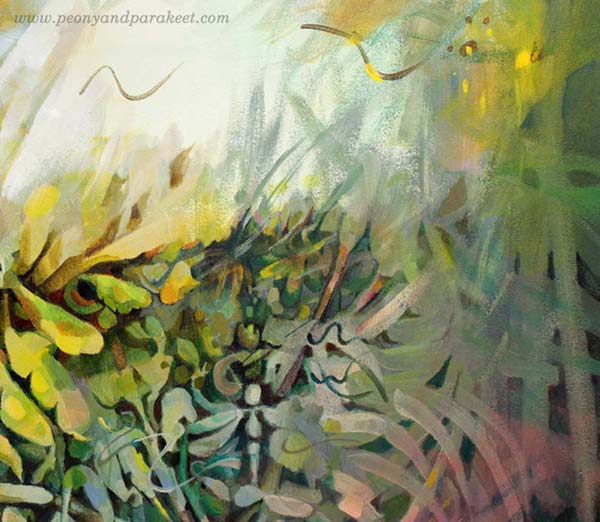
I painted a dragonfly for your inner child to play with while the adult can ponder about the more abstract strokes.
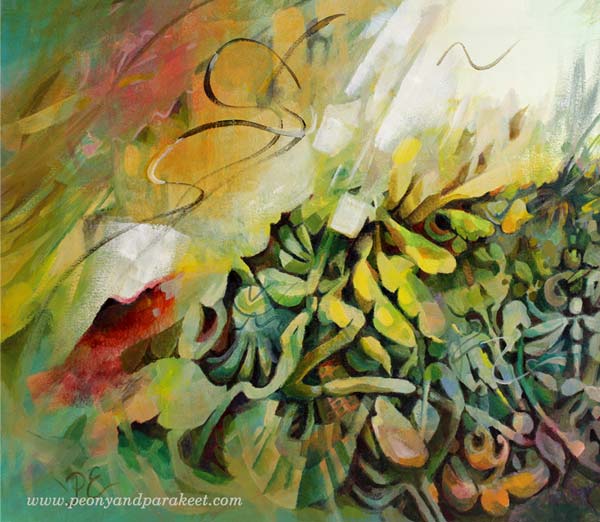
Sometimes simple lines and colors can express more than realistic objects.
Finding Clarity and Balance for Art-Making
For a long time, I haven’t been happy about my art. Especially this fall, it has changed. I have found what my child needs to be satisfied with the result, and what pleases the adult in me. Surprisingly, being able to satisfy the child has been crucial for me to getting forward in abstract painting. This one is in progress, and you will get more pics and stories about it when it’s finished.
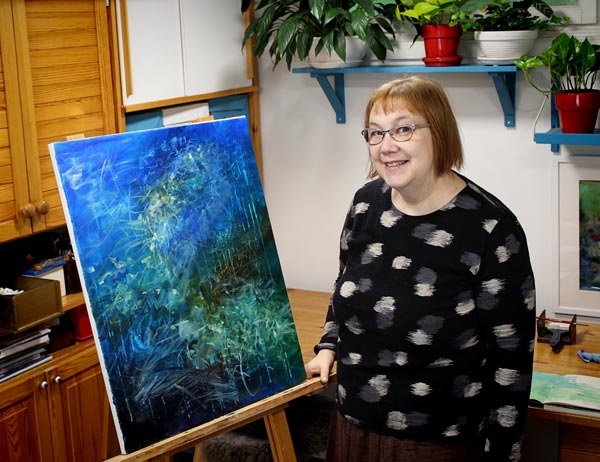
What do you think? Are you in the journey of finding clarity for your art? What would need to change in your art so that both the child and the adult are happy? Tell me, I am interested to know!
Expressive Abstract Style Tutorial – Paint a Beautiful Mess!
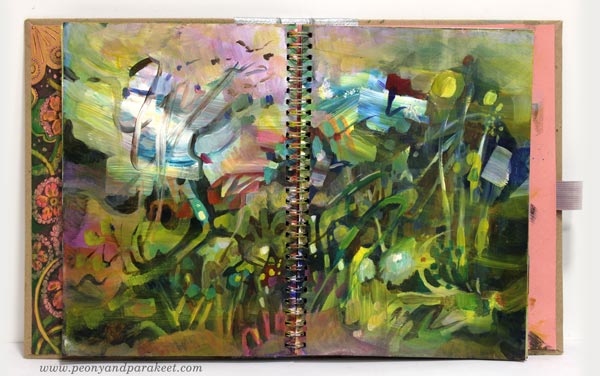
This week I have a video about painting in an expressive abstract style. It’s a very contemporary style which many artists have nowadays. It’s based on loose strokes, and I guess it’s the style that many who are not so much into art say that even a child can do it, but it’s not quite like that! Watch the video!
Are you interested in creating abstract art? Do you wish to learn more about abstract art in my blog and in my classes? Leave a comment!
3 Tips for Improving Busy Mixed Media Pieces
This week, I have a revamped old piece, and share three tips about making busy mixed media pieces more attractive for the viewer.
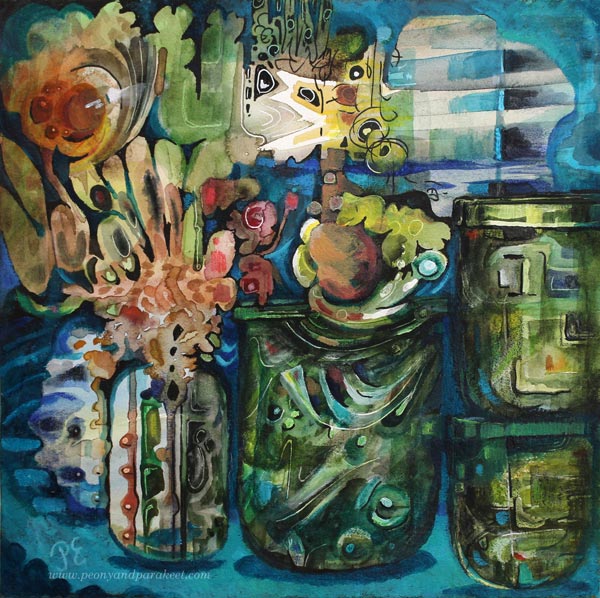
The image above is a revamped version of the busy mixed media piece below. It’s 12 by 12 inches, and I originally made it back in 2014 for a blog post about how to paint glass.
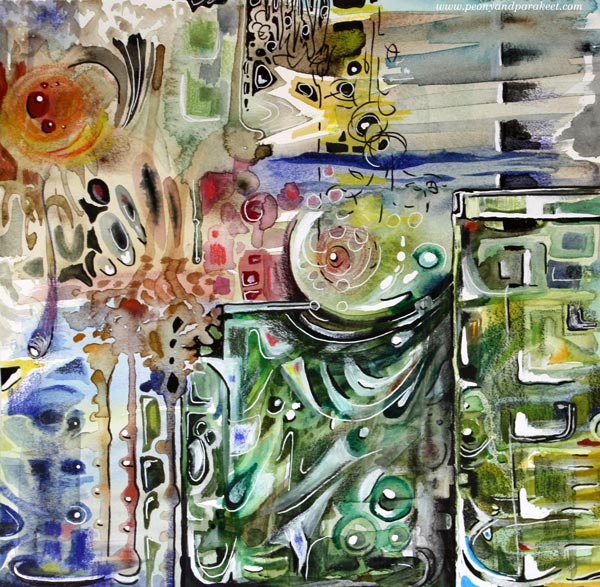
I visited the Finnish Glass Museum a couple of weeks ago, so this piece felt really inspiring again! Let’s dive deeper into how I changed it.
Tip #1 – Cure the White Spot Fever
Back in 2014, I had fallen in love with all kinds of white pens, paints, and correction fluids. A little dot here, another there, and the element looked prettier. But adding dots and spots also make the piece busier. For the viewer, it’s like trying to find its way through crowded streets where everyone is trying to get the attention: “Hey, hey, hey, you there, look at me!”
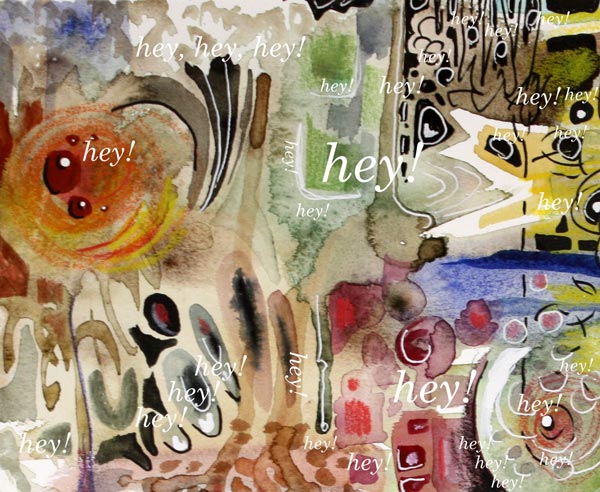
When you are a doctor for the white spot fever, start by toning down all the spots that are located near the edges. We want to steer the eye to the middle first, so the edges don’t have to be so eye-catching. If this is the first time you work on this job, watercolors can be a good choice. Even if the pigment wouldn’t stick on all the surfaces, you get the impression of how the piece looks if you make the edges less noticeable. Turn the piece upside down, so that it’s easier to focus on the task, and not look at the big picture.
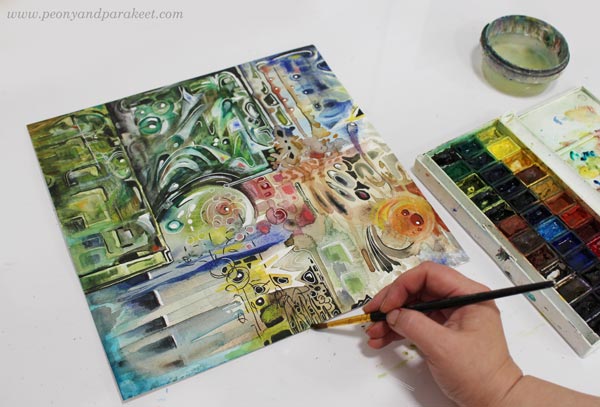
Of course, your pieces can have fever, even if it’s not the white spot fever. The general advice for any fever is to remove all the eye-catching small elements that are located near the edges.
Tip #2 – Form Friendships between Elements
Often when we don’t feel connected with the image, the image itself doesn’t express connection. When the elements are floating separately, there can be a lonely undertone in the whole piece. On the other hand, if there is no contrast between the elements, the image can look busy no matter how connected the elements are.
Here are my two versions side by side. In the old version, there are big glass jars, but the contrast between them is not very clear. There are a lot of small shapes that are floating lonely.
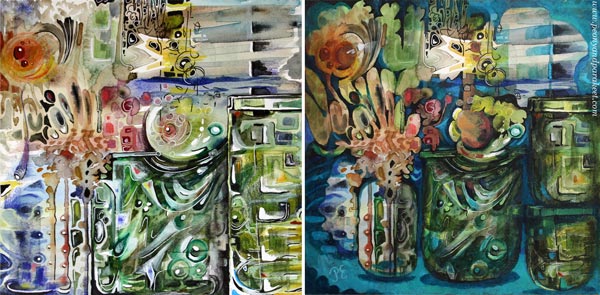
At best, adding connections make the image to deliver a message. When I looked at my piece, it was unclear to me what it was about. In the old blog post, I had written: “It’s about parents trying to protect their children. The parents have good intentions, and they do their best, but in the end, they have to let the child step into the world. I have painted two glass vases to represent the parents. The child sees the world through the parents, and even if they want to protect the child, they are fragile too.”
But now, I found the element that looked like jaws most intriguing. It seemed to be a rising spirit, a small but powerful baby dragon, which only needed a neck to become a central element.
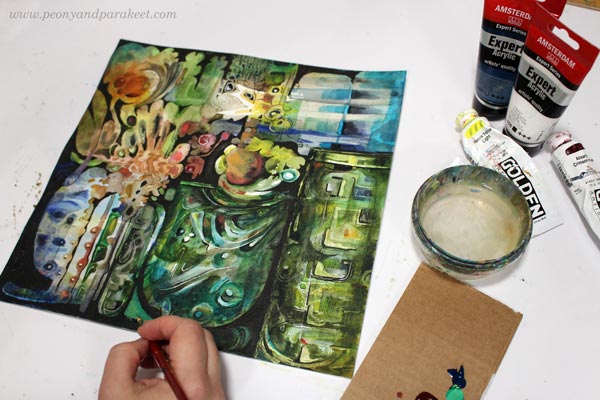
I used dark india inks and black pen to quickly sketch how I would connect the elements, and then continued the work with acrylics and lighter colors. I broke the biggest jar near the edge to two jars so that they won’t compete with the focal point so much.
Tip #3 – Make a Highway for the Viewer
Busy pieces often have so many paths for the eye that it’s not clear where to start and how to continue. The best thing is to be clear and make a highway that goes around the image. The viewer can then take smaller scenic routes around the details, but there’s always the big safe road to return to that leads to the main attractions.
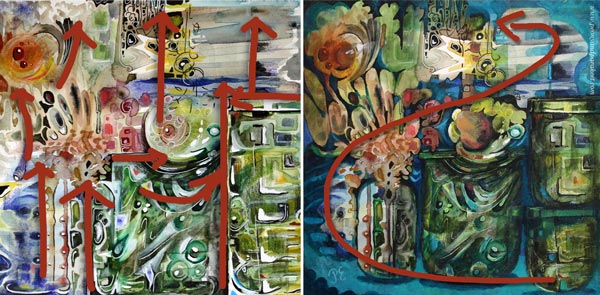
Building a highway requires that you know what your main elements are. After finding the spirit of the jar, I made the red circle communicate with it. Now I added a couple of white spots so that it looks like there’s a voice or a reflection flying between the two. So there’s use for those white dots, just use them sparingly and near the places where you want to lead the eye!
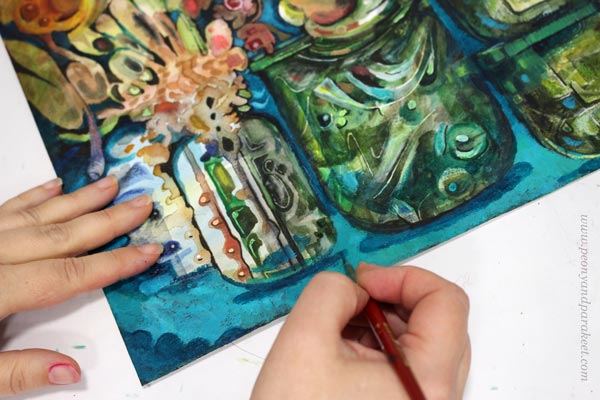
With turquoise tones, I painted a route from the right bottom corner to the two central elements. I also added more depth to the image by painting shadows. Shadows would be my fourth tip, but it’s worth a separate post, so I will get back to it sometimes later.
No More Busy Mixed Media!
I named the revamped version as “Song of Glass” because it’s now about finding the singing spirit of the silent jars.

I hope you found this post helpful for busy mixed media pieces. See my classes for more handy tips and advice!